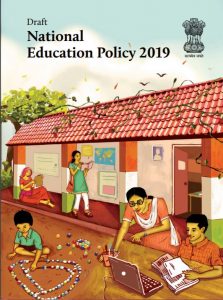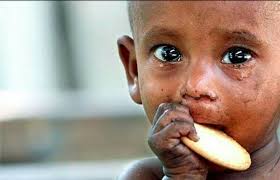

 By Satya Narayan Misra, Damodar Jena and Sanjaya Kumar Ghadai* in Bhubaneswar, August 27, 2022: Raghuram Rajan in his widely read book “The Third Pillar: How Markets and the State Leave the Community Behind” laments how we care for two pillars, viz. the role of the market in promoting economic efficiency and the State in creating enabling environment for the private sector, neglecting in the process the third pillar, the role of community participation in nation building.
By Satya Narayan Misra, Damodar Jena and Sanjaya Kumar Ghadai* in Bhubaneswar, August 27, 2022: Raghuram Rajan in his widely read book “The Third Pillar: How Markets and the State Leave the Community Behind” laments how we care for two pillars, viz. the role of the market in promoting economic efficiency and the State in creating enabling environment for the private sector, neglecting in the process the third pillar, the role of community participation in nation building.
In 1975 Mrs. Indira Gandhi on the birthday of Mahatma Gandhi introduced the Integrated Child Development Services (ICDS) to provide integrated health, nutrition, and education services to children up to the age of 6, as well as supplementary nutrition to pregnant and nursing mothers. Given India’s dismal record in terms of IMR (Infant Mortality Rate), the Maternal Mortality Rate (MMR), poor health care, and early childhood education, this flagship holistic program was unique in the world in terms of coverage, content, and character.
Starting as a pilot program, it got universalized in the 1980s, providing protein supplements, Vitamin A, & Iron & Folic Acid (IFA) to nearly 97.2 million children and pregnant and lactating mothers & early childhood education (3-6 years) to about 38.2 million children. The rendezvous of this nutrition and inclusive program is Anganwadi centres (14 lakh), and the pied pipers are 22 lakh women workers, and Asha workers who provide the panoply of services, with a Central budget of Rs.20, 263/- crore. This program displays remarkable cooperative federalism.
 The Indian Constitution mandates that ‘it is the duty of the State to raise the level of nutrition of its people’. The reality is rather grim and distressing. The latest NFHS-5 survey (2019-21) brings out how close to 35% of the children are stunted and 63% suffer from anemia due to persistent malnutrition, iron deficiency, and unhygienic living condition. There is also a rise in the percentage of adolescent girls/women (15-49 years) who are suffering from anemia from 53% in 2015 to 57% in 2021.
The Indian Constitution mandates that ‘it is the duty of the State to raise the level of nutrition of its people’. The reality is rather grim and distressing. The latest NFHS-5 survey (2019-21) brings out how close to 35% of the children are stunted and 63% suffer from anemia due to persistent malnutrition, iron deficiency, and unhygienic living condition. There is also a rise in the percentage of adolescent girls/women (15-49 years) who are suffering from anemia from 53% in 2015 to 57% in 2021.
The Poshan Abhiyaan was unveiled by the Prime Minister Narendra Modi in 2017 to fast-track reduction in anemia by targeting 3% reduction per year. Technology and community participation are being envisaged as major pillars for an Anemia Mukt Bharat.
One of the under-researched areas in the Anganwadi centres is the role of community participation. The authors embarked on a field study in the Khordha district to ascertain how Knowledge, Attitude, and Practice (KAP) are operating in the Anganwadis. The important findings in this research study have been that the beneficiaries associated with the activities of the AWC have felt that their capacity in terms of personality development, improvement in health and hygiene has substantially improved. The overall KAP level is higher in rurban (urban fringe) areas than in rural areas.
While the stakeholders are positively involved in the community participation, particularly in the nutrition program there is a lukewarm response in regard to the pre-schooling program of Anganwadis and health care.
 The National Education Policy, 2020 has also commented upon the poor state of learning in Early Childhood Education in Anganwadis and has very strongly recommended that the Anganwadi workers should be trained properly and the infrastructural facility should be improved. Since foundational learning in terms of reading, writing, and numeracy as per ASER (Annual Status of Education Report) are as low as 30%, the role of informal joyful learning when a child is in the age group of 3-6 becomes a critical variable.
The National Education Policy, 2020 has also commented upon the poor state of learning in Early Childhood Education in Anganwadis and has very strongly recommended that the Anganwadi workers should be trained properly and the infrastructural facility should be improved. Since foundational learning in terms of reading, writing, and numeracy as per ASER (Annual Status of Education Report) are as low as 30%, the role of informal joyful learning when a child is in the age group of 3-6 becomes a critical variable.
The other area that needs greater attention is how to improve the connectivity between the Anganwadi beneficiaries and the primary health care centers. While the Asha workers displayed exceptional commitment during the Pandemic period against the heaviest odds, it is important that the quality of our primary health care dispensaries & infrastructure and connectivity with the Anganwadi’s needs to be urgently improved & galvanized.
Out of the three major activities of Anganwadis, while there is enormous enthusiasm and community participation for the nutritional dimension, the response of all stakeholders was found to be rather tepid in regard to health care and preschool education.
As India steps into its 76 years of independence, it is gratifying to note that programs like ICDS for improving nutritional intake, early childhood education, and basic health care have not become victims of ideological differences of parties in power. Mr. Modi as PM can be a game changer if the Centre & States accord high political priority to it.
What is dispiriting is that the Big Push model of Rosenstein-Rodan (1943) is not in evidence to allocate much higher allocation to the ICDS program, plug serious bottlenecks in supply chain management of Vitamin-A, IFA to the intended beneficiaries, and using mobile technology to strengthen service delivery, rhetoric needs to be replaced by time-bound action and demagogy supplanted by democratic accountability.
Jeffrey Sachs, the leading light of Millennium Development Goals & SDG writes in his book “The Ages of Globalization: Geography, Technology, and Institutions” that instead of leaving development program targets to the State, a collaborative approach between the State, corporate, and local community is called for. One of the critical pillars of India’s journey to become a five trillion-dollar economy is predicated on its demographic dividend.
 India is interestingly a young nation in an aging world. But the demographic dividend can lapse into a demographic disaster unless we pay attention to the bottom 30% of India’s population, who look upon the Anganwadis as epicentres for nutrition supplements, Vitamin-A, iron tablets, basic health care support, and informal preschool learning.
India is interestingly a young nation in an aging world. But the demographic dividend can lapse into a demographic disaster unless we pay attention to the bottom 30% of India’s population, who look upon the Anganwadis as epicentres for nutrition supplements, Vitamin-A, iron tablets, basic health care support, and informal preschool learning.
These development deficits cannot be mitigated by Adam Smith’s dictum of free market and wealth maximization but by Prof. Amartya Sen’s human capability approach where the state ensures equal access of basic nutritional needs, quality learning and health care to all its children, girls and citizens.
Views are Personal
Satya Narayan Misra is Professor of Emeritus while Damodar Jena is Associate Professor and Sanjaya Kumar Ghadai is Research Scholar


Leave a Reply
Be the First to Comment!